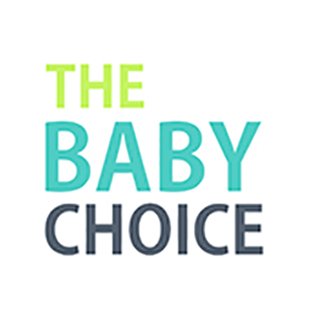Phonics is an essential aspect of learning to read and write. It involves teaching children how to connect the sounds of spoken language with written letters and words. Phonics workbooks are interactive learning materials that can assist in teaching children how to decode words and develop their reading skills.
With so many options available, choosing the right phonics workbook for your child can be overwhelming. This article offers a product comparison of the best phonics workbooks for kids, including beginner, intermediate, and advanced level readers.
In this article, we will explore the importance of phonics workbooks and what to look for when choosing one. We will also provide a comprehensive overview of the top phonics workbooks for kids, outlining their strengths and weaknesses.
Additionally, we will discuss the pros and cons of electronic phonics workbooks and offer tips for using phonics workbooks effectively, ensuring your child gets the most out of their learning experience.
Whether you are a parent or educator, this article is a valuable resource for choosing the best phonics workbooks for your child.
Key Takeaways
- Phonics workbooks are essential for teaching children how to decode words and develop reading skills.
- When choosing a phonics workbook, it’s important to consider the level of difficulty, curriculum, and engaging activities.
- Top phonics workbooks for beginners include Hooked on Phonics Learn to Read, Bob Books Set 1: Beginning Readers, and Spectrum Phonics Workbook Grade 1.
- Electronic phonics workbooks offer interactivity and immediate feedback, but may not be suitable for all children. The decision to use them should be made on a case-by-case basis.
The Importance of Phonics Workbooks for Kids
The utilization of phonics workbooks for kids can play a crucial role in enhancing their reading and writing skills. Phonics workbooks provide systematic instruction and practice in decoding and encoding phonemes, thereby improving their phonological awareness and word recognition abilities. Phonics workbooks are a great way to introduce children to the sounds and letters of the English language.
By teaching children to associate sounds with letters, they can learn to read and write words effectively.
There are several benefits of using phonics workbooks for early childhood development. Firstly, phonics workbooks can help children to develop strong reading and writing skills, which are essential for academic success. Secondly, phonics workbooks are an excellent way to introduce children to the English language and its complex sound system. Finally, phonics workbooks can be tailored to suit the learning style of each child, making them an effective tool for individualized instruction.
To choose the right phonics workbook for your child’s learning style, consider their age, reading level, and interests. Look for workbooks that are engaging, interactive, and challenging enough to keep your child interested and motivated.
What to Look for in a Phonics Workbook
When evaluating phonics workbooks, it is important to consider the level of difficulty, the scope and sequence of the curriculum, and the inclusion of engaging activities. A phonics workbook should be challenging enough to promote learning but not too difficult that it discourages a child from continuing. The scope and sequence of the curriculum should be clear and organized, so that the child can progress in a logical and systematic way. Additionally, incorporating engaging activities into the workbook can help children stay motivated and interested in learning.
One way to make phonics learning more engaging is to incorporate interactive learning materials. Interactive learning materials can be in the form of digital games, videos, or interactive worksheets. These materials can provide immediate feedback, which can be helpful in reinforcing learning. Another way to incorporate phonics into daily activities is to use everyday objects and situations to teach phonics. For example, parents can ask their child to find letters or sounds in their favorite books or even in the environment around them. By making phonics a part of everyday life, children are more likely to retain what they have learned.
Top Phonics Workbooks for Beginners
This section will highlight some of the top phonics workbooks for beginners.
The Hooked on Phonics Learn to Read program offers interactive and engaging materials for young learners.
Bob Books Set 1: Beginning Readers is a popular choice for its simple and systematic approach to teaching phonics.
The Spectrum Phonics Workbook Grade 1 provides comprehensive lessons and practice exercises for children at the first-grade level.
Hooked on Phonics Learn to Read
Hooked on Phonics Learn to Read is an interactive and engaging phonics workbook that provides children with an effective way to improve their reading skills. This phonics workbook is designed to help children learn to read with confidence and independence. It includes 36 progressive lessons that gradually introduce new letter sounds, sight words, and reading comprehension skills.
What sets Hooked on Phonics Learn to Read apart from other phonics workbooks is its interactive nature, which makes learning more engaging and fun for children.
The following nested bullet point list highlights some of the key features that make Hooked on Phonics Learn to Read an effective phonics workbook:
Interactive phonics apps: Hooked on Phonics Learn to Read comes with an interactive app that reinforces the skills learned in the workbook. This app includes games, songs, and videos that make learning fun and engaging for children.
Gradual introduction of skills: The workbook is designed to gradually introduce new letter sounds, sight words, and reading comprehension skills. This ensures that children are not overwhelmed and can learn at their own pace.
Benefits of early phonics education: Research has shown that early phonics education can lead to better reading skills and comprehension. Hooked on Phonics Learn to Read provides children with a solid foundation in phonics, which can help them become confident and successful readers.
Bob Books Set 1: Beginning Readers
The Bob Books Set 1: Beginning Readers is a series of twelve books that are designed to help children develop their phonics skills. The books use simple words and short sentences to build upon each other, gradually increasing in difficulty as the child progresses.
The set is ideal for children aged between four and six who are just starting to learn how to read.
The teaching strategies used in the Bob Books Set 1 are centered around the use of repetition and consistent vocabulary. The books are structured in a way that allows the child to become familiar with the sounds and letters of the alphabet, while also developing their ability to recognize and read simple words.
By the end of the set, children should have developed a solid foundation in phonics, including the ability to recognize short vowel sounds and simple consonant blends.
The learning outcomes of the Bob Books Set 1 are significant, as they provide children with the basic skills they need to become successful readers.
Spectrum Phonics Workbook Grade 1
Moving on from our previous discussion about the Bob Books Set 1: Beginning Readers, we will now delve into the benefits of using phonics workbooks as a tool for interactive learning for children.
One of the most recommended workbooks for early learners is the Spectrum Phonics Workbook Grade 1. This workbook offers a comprehensive approach to teaching phonics, covering essential skills such as letter recognition, phonemic awareness, word families, and blending sounds.
The exercises are designed to be engaging and age-appropriate, providing a fun and interactive way for children to learn. Additionally, the workbook includes answer keys and progress charts, allowing parents and educators to monitor the child’s progress and adjust the lessons accordingly.
Overall, the Spectrum Phonics Workbook Grade 1 is an excellent choice for parents and educators who want to provide their children with an effective and enjoyable way to learn foundational reading skills.
Top Phonics Workbooks for Intermediate Readers
This discussion will focus on three top phonics workbooks for intermediate readers:
- Explode the Code Book 1-3
- Scholastic Success with Reading Comprehension Grade 2
- Phonics for Kindergarten Grade K
These workbooks are designed to help children develop their phonics skills and improve their reading comprehension. Each workbook offers a variety of exercises and activities that cater to the needs of intermediate readers.
Explode the Code Book 1-3
Expanding a child’s phonemic awareness and decoding skills, the Explode the Code workbooks 1-3 provide engaging and interactive learning materials.
These workbooks are specifically designed for children in kindergarten through second grade, with the aim of building a strong foundation in phonics and reading.
The Explode the Code workbooks feature interactive activities such as puzzles, mazes, and fill-in-the-blank exercises that help children develop their phonetic skills.
The workbooks also introduce new concepts gradually, ensuring that children have ample time to practice and reinforce their learning.
Additionally, the workbooks provide ample opportunities for children to apply their phonetic knowledge to reading and writing, which is critical for developing their literacy skills.
With its interactive features and targeted age group, the Explode the Code workbooks are a valuable resource for parents and teachers looking to enhance their child’s phonics knowledge and reading abilities.
Scholastic Success with Reading Comprehension Grade 2
Scholastic Success with Reading Comprehension Grade 2 offers a comprehensive approach to improving a child’s reading comprehension skills, emphasizing critical thinking and analysis. The workbook is designed to help children develop effective reading strategies that aid their understanding of texts. It is divided into various sections that cover different reading skills such as summarizing, making inferences, identifying the main idea, and understanding word meaning in context.
The workbook provides ample opportunities for children to practice their comprehension skills through various reading passages and exercises. Each section begins with a brief introduction that explains the reading skill being taught and provides examples. The exercises that follow are designed to help children apply the reading strategies they have learned. The workbook is also filled with colorful illustrations that add to the visual appeal of the book. Overall, Scholastic Success with Reading Comprehension Grade 2 is a valuable resource for parents and teachers looking to help their children or students improve their reading comprehension skills.
| Pros | Cons |
|---|---|
| Comprehensive approach to improving reading comprehension skills | May not be challenging enough for advanced readers |
| Provides ample opportunities for practice | Some exercises may be repetitive |
| Colorful illustrations add to the visual appeal | May not be suitable for children who struggle with reading |
| Suitable for both classroom and home use | Not as interactive as some other phonics workbooks |
Phonics for Kindergarten Grade K
Kindergarten students can improve their literacy skills by utilizing a comprehensive and engaging resource that emphasizes phonics instruction.
The Phonics for Kindergarten Grade K workbook is an excellent option for homeschooling parents looking to provide their children with a strong foundation in reading. The workbook includes a variety of phonics activities that are designed to keep young learners engaged and motivated.
Parents can also supplement the workbook with the best phonics apps for kindergarten, which provide additional opportunities for children to practice their phonics skills. Some of the best phonics apps for kindergarten include ABCmouse, which offers interactive games and activities that reinforce phonics concepts, and Hooked on Phonics, which provides a comprehensive phonics program that includes videos, books, and games.
With the Phonics for Kindergarten Grade K workbook and the best phonics apps for kindergarten, parents can help their children build a strong foundation in reading that will serve them well throughout their academic careers.
Top Phonics Workbooks for Advanced Readers
For children who have already mastered the basics of phonics, there are several advanced phonics workbooks available that can challenge and engage them in a fun and interactive way. These workbooks contain advanced phonics techniques that cater to different learning styles and help children improve their reading and spelling skills. The workbooks also include exercises that require critical thinking, problem-solving, and application of phonics rules to different scenarios.
One of the top phonics workbooks for advanced readers is the ‘Explode the Code’ series. This workbook series is designed for children who are already confident in their phonics skills and are ready for more challenging exercises. The series includes workbooks that focus on specific phonics skills such as word families, syllabication, and vowel combinations.
The exercises in the workbooks are designed to help children develop critical thinking and problem-solving skills while reinforcing their phonics knowledge. Overall, advanced phonics workbooks can help children continue to improve their reading and spelling skills and prepare them for more complex language skills.
Pros and Cons of Electronic Phonics Workbooks
Electronic phonics workbooks offer both advantages and disadvantages for young learners. One of the main advantages of electronic phonics workbooks is their interactivity, which engages children in a way that traditional workbooks cannot. Electronic workbooks often include games, videos, and other multimedia features that make phonics learning fun and exciting for children.
Additionally, electronic workbooks offer immediate feedback and assessment, allowing children to track their progress and identify areas where they need improvement. This instant feedback helps children stay motivated and engaged, as they can see their progress in real time.
On the other hand, there are also some disadvantages to using electronic phonics workbooks. One of the main concerns is the potential impact of technology on phonics learning. While electronic workbooks may be engaging and fun, they can also be a distraction for some children.
Additionally, some parents and educators worry that electronic workbooks may not provide the same level of cognitive engagement as traditional workbooks. Some children may find it difficult to focus on the task at hand when presented with multiple stimuli and distractions, which can hinder their phonics learning progress.
Ultimately, the decision to use electronic phonics workbooks should be made on a case-by-case basis, taking into account the individual needs and learning styles of each child.
Tips for Using Phonics Workbooks Effectively
When using phonics workbooks, it is important to set goals for your child to achieve. This can help them stay motivated and engaged in the learning process.
Additionally, establishing a routine for when and how often your child will work on the workbook can help create a sense of structure and consistency.
Finally, providing positive feedback when your child completes a task can help reinforce their progress and boost their confidence.
By implementing these tips, parents can effectively use phonics workbooks to support their child’s literacy development.
Set Goals
Establishing clear objectives for phonics learning is crucial for effective teaching, and the use of interactive workbooks can aid in goal-setting for young learners. By setting goals, students are able to establish accountability for their learning progress and can measure their achievements. In order to effectively set goals in phonics learning, teachers must begin by assessing the student’s current level of proficiency and then creating realistic and attainable goals.
One effective way to set phonics learning goals is by using a table that outlines the specific skills and concepts that the student needs to learn. This table can be broken down into five distinct categories: phonemic awareness, phonics, fluency, vocabulary, and comprehension. By using this table, teachers can identify the specific areas that the student needs to improve upon and can then tailor their instruction to meet these needs. Additionally, by regularly assessing the student’s progress, teachers can determine if the goals are being met and can adjust their instruction accordingly. Ultimately, setting clear objectives and utilizing interactive workbooks can help young learners achieve success in phonics learning.
| Phonemic Awareness | Phonics | Fluency | Vocabulary | Comprehension |
|---|---|---|---|---|
| Identifying initial, medial, and final sounds | Recognizing letter-sound correspondences | Reading with accuracy and expression | Developing a sight word vocabulary | Understanding the meaning of text |
| Blending and segmenting sounds | Decoding words with regular patterns | Reading at an appropriate rate | Building a robust vocabulary | Applying reading strategies |
| Manipulating sounds (add, delete, substitute) | Decoding words with irregular patterns | Reading with fluency and phrasing | Understanding word meanings | Making inferences and drawing conclusions |
| Recognizing rhyming words | Using context clues to decode unfamiliar words | Reading with comprehension | Understanding figurative language | Summarizing text |
| Identifying syllables | Recognizing high frequency words | Building fluency through repeated reading | Distinguishing between homophones | Analyzing text features |
Establish a Routine
In order to achieve the goals set for a child’s phonics learning journey, it is essential to establish a routine. This routine will provide structure and consistency, which are crucial for effective learning. The routine should be designed in a way that balances structure and flexibility, allowing for adjustments to be made when necessary.
Creating consistency is important because it helps children understand what is expected of them. When they know what to expect, they can focus on learning the material without being distracted by uncertainty. The routine should be established with clear expectations and guidelines, so children can easily follow along.
Balancing structure and flexibility is also important because it allows for adjustments to be made when necessary. For example, if a child is struggling with a particular concept, the routine can be adjusted to allow for more time to focus on that concept. Additionally, incorporating fun and engaging activities into the routine can help keep children motivated and interested in learning.
To establish a routine for phonics learning, parents and educators can:
Set a consistent time each day for phonics learning
Create a schedule that includes breaks and fun activities
Be flexible and adjust the routine as needed to accommodate the child’s needs
By establishing a routine that balances structure and flexibility, children can develop the necessary phonics skills while also enjoying the learning process.
Provide Positive Feedback
Providing positive feedback is a crucial aspect of supporting a child’s phonics learning journey. When a child receives positive feedback, it helps to boost their confidence and self-esteem, which in turn motivates them to continue learning. This positive reinforcement also reinforces the child’s understanding of the concept and encourages them to apply it in different situations.
Giving positive feedback can also help to create a positive learning environment where the child feels comfortable to ask questions and take risks without fear of being judged.
To deliver positive feedback effectively, it is essential to be specific and genuine. Instead of using generic praise, such as ‘good job,’it is better to provide specific feedback that highlights what the child did well. For example, instead of saying ‘good job,’you can say, ‘I noticed that you worked hard on sounding out the word ‘cat.’ That was an excellent effort!’This type of feedback is more specific and shows the child that their efforts are being recognized.
Additionally, it is essential to deliver feedback immediately after the child has completed the task. This helps to reinforce the child’s understanding of the concept and keeps them engaged in the learning process. By providing positive feedback consistently, parents and teachers can create a positive learning environment that fosters a love for learning and encourages children to reach their full potential.
Frequently Asked Questions
How long should a child spend on a phonics workbook each day?
Incorporating phonics into daily routines can offer numerous benefits to a child’s literacy development. One of the main benefits of consistent practice is the reinforcement of phonemic awareness, which is crucial in learning how to read.
Phonics workbooks can aid in this process by providing structured exercises that encourage children to recognize and decode phonetic patterns. However, it is important to note that the amount of time a child should spend on a phonics workbook each day may vary depending on their age, attention span, and overall level of readiness.
Generally, it is recommended that younger children spend shorter periods of time on phonics activities, while older children can gradually increase their practice time. Ultimately, it is important to find a balance that works for the child and to incorporate phonics practice into their daily routine in a way that is engaging and enjoyable.
Are phonics workbooks designed for a specific age group or can they be used by children of different ages?
Phonics workbooks are designed to teach children how to read and write using phonetic sounds. The content of these workbooks is generally age appropriate, as the exercises and activities are structured to suit the cognitive development of children at different stages of their learning journey.
However, phonics workbooks can be used by children of different ages, provided that the content is adjusted to suit their individual needs. The benefits of using phonics workbooks are numerous, as they provide a structured approach to learning that can be tailored to the learning abilities of different children.
For children with learning difficulties, phonics workbooks can be particularly beneficial, as they provide a clear and structured approach to learning that can help to build confidence and improve reading and writing skills.
Overall, phonics workbooks are a valuable learning tool for children of all ages and abilities, as they can help to build a strong foundation in phonetic sounds and improve literacy skills.
Can phonics workbooks be used as a standalone resource or should they be used in conjunction with other learning materials?
Phonics workbooks can be used as a standalone resource for children’s learning, but their effectiveness ultimately depends on the child’s individual learning style and needs.
There are pros and cons to using workbooks alone versus supplementing them with other materials. The benefits of using workbooks alone include their convenience and affordability, as well as the structured and self-paced learning they offer.
However, some children may benefit from additional support and hands-on learning activities that workbooks alone may not provide.
Ultimately, the effectiveness comparison of using workbooks alone versus in conjunction with other materials will depend on the child’s individual learning needs and preferences.
How often should parents or teachers assess a child’s progress when using phonics workbooks?
Assessing progress and maintaining regular communication between parents and teachers is essential when using phonics workbooks as a learning resource. Regular assessment enables parents and teachers to monitor the child’s progress and identify areas that require more attention. In doing so, parents and teachers can adjust their teaching strategies accordingly to ensure that the child’s needs are met.
It is recommended that assessments take place at regular intervals, such as weekly or monthly, depending on the child’s progress. Additionally, maintaining open communication between parents and teachers can help to address any concerns or questions that may arise, ensuring that the child’s learning experience is as effective as possible.
Are there any activities or games that can be used in conjunction with phonics workbooks to make learning more interactive?
Interactive learning strategies that incorporate technology can enhance the effectiveness of phonics workbooks and make learning more engaging for children.
There are a variety of activities and games that can be used in conjunction with phonics workbooks, such as educational apps, interactive whiteboards, and online resources.
For instance, educational apps can provide children with a fun and interactive way to practice phonics skills, while interactive whiteboards can enable teachers to create dynamic and engaging lessons that cater to different learning styles.
Additionally, online resources such as phonics games and quizzes can reinforce phonics concepts and help children to develop their reading and writing skills.
By incorporating these interactive learning strategies, parents and teachers can create a more dynamic learning environment that encourages children to actively engage with phonics workbooks and achieve better learning outcomes.
Conclusion
Phonics workbooks are important learning materials that help develop a child’s reading and writing skills. When choosing a phonics workbook, it is essential to consider its content, format, and level of difficulty.
There are various options available for children of different ages and learning levels. Beginners can start with simple phonics workbooks that introduce them to letter sounds and basic reading skills. Intermediate readers can benefit from more advanced workbooks that focus on word families and sentence structure. Advanced readers can further enhance their skills with challenging workbooks that explore complex phonics patterns and vocabulary.
Electronic phonics workbooks are becoming increasingly popular due to their interactive features and accessibility. However, it is important to consider the drawbacks of screen time and ensure that children are still engaging in other forms of learning and physical activity.
Effective use of phonics workbooks involves setting realistic goals, practicing consistently, and providing positive reinforcement. Parents and educators can create a supportive learning environment by incorporating phonics activities into daily routines and offering praise and encouragement for progress.
In conclusion, phonics workbooks are valuable learning tools that can help children improve their reading and writing skills. By selecting the appropriate level and format, and using them consistently and effectively, children can develop a strong foundation for academic success. Whether using traditional paper-based workbooks or electronic versions, it is important to balance screen time with other forms of learning and physical activity, and to provide a supportive and encouraging learning environment.

















